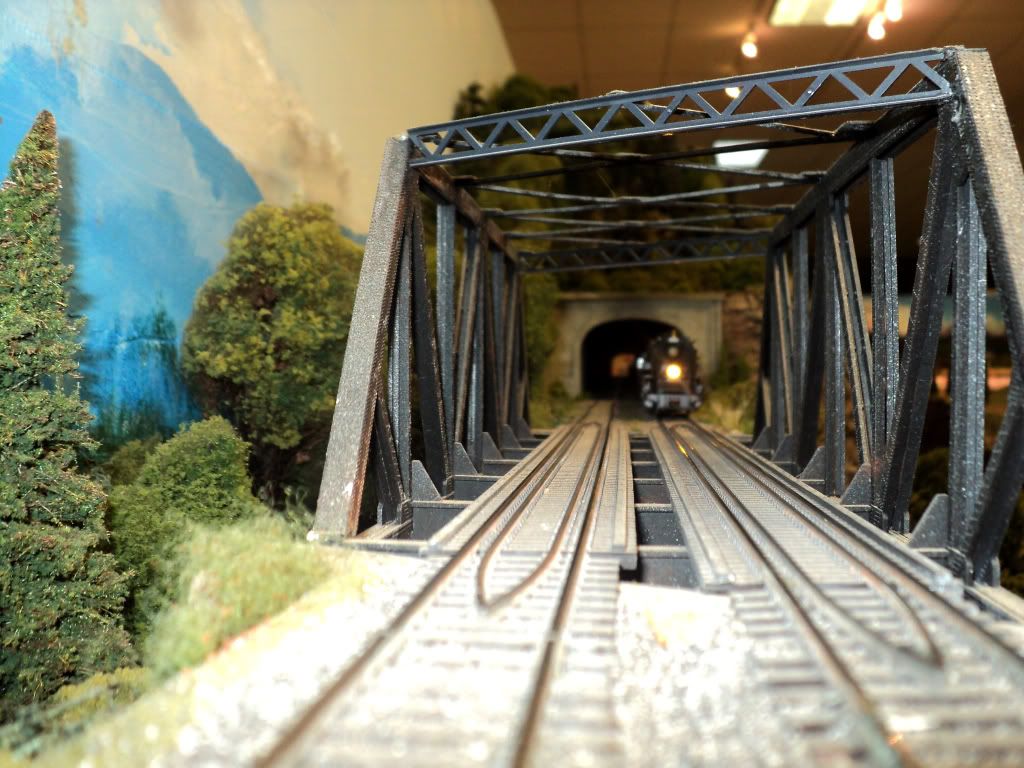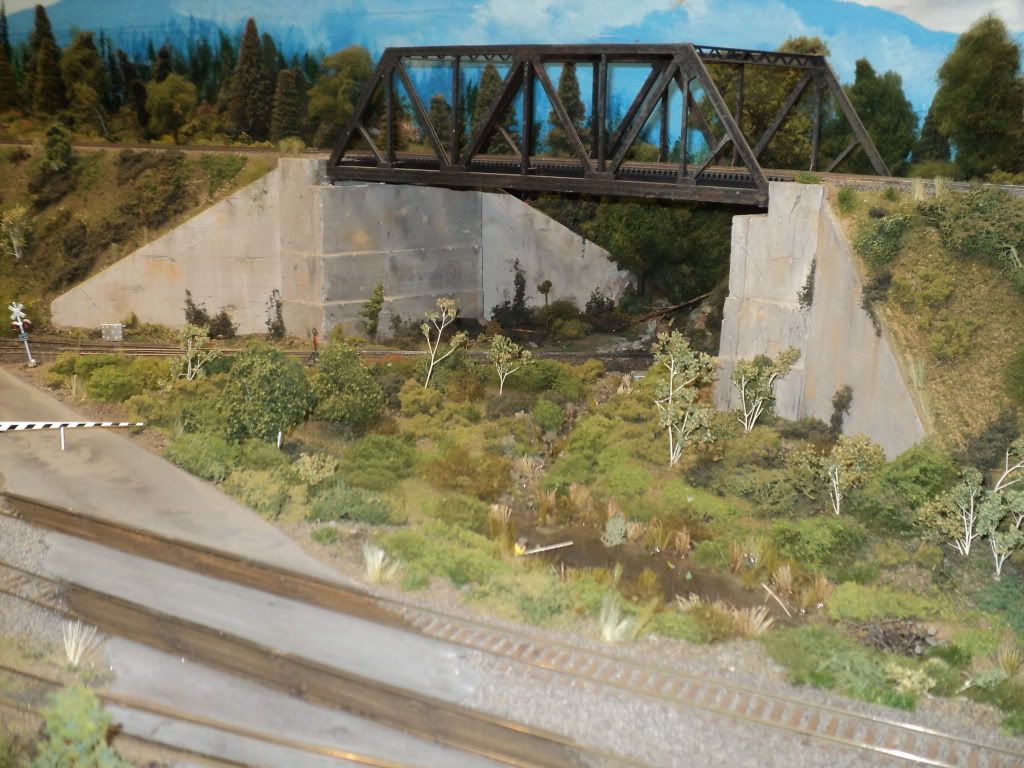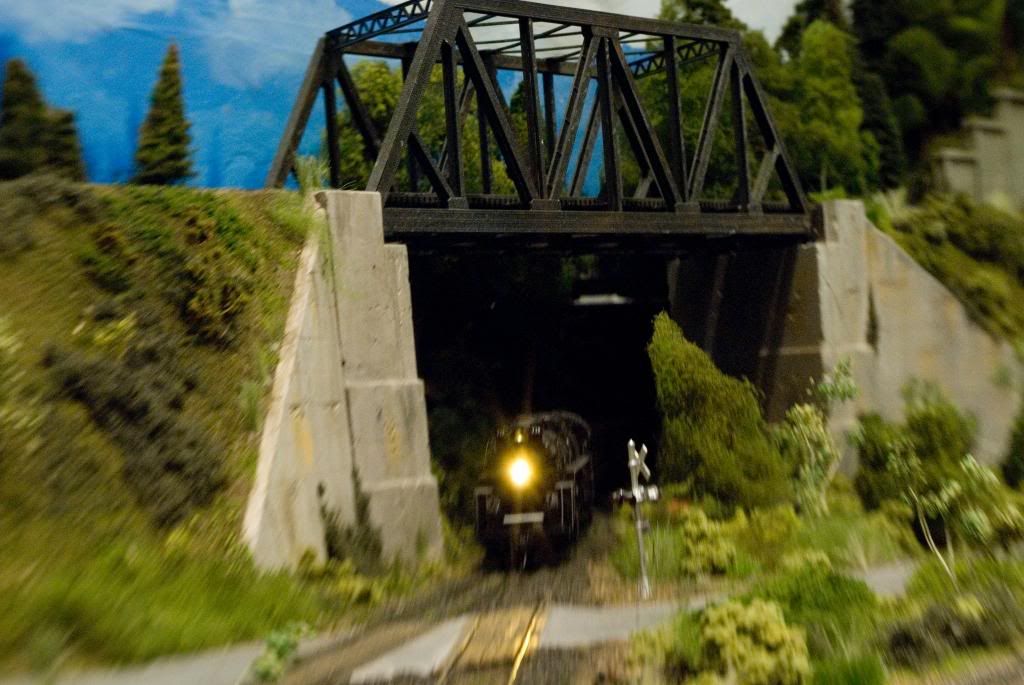I am building my first layout with elevation and plan on adding a few simple bridges. In the middle of the layout I want a bridge to go over a road and another rail line. I have modern trains with super liners, auto racks, and stacker container trains. I am planning 4" of clearance, which appears to be plenty. I would like to use Walthers double track truss bridge. Will my tall trains fit through that bridge? What other things do I need to consider when one rail line crosses over another? This isn’t going to be an interchange?
I don’t think your Auto-racks and Double-stacks will go through that bridge without some modifications. Those cars are higher than the “normal” freight cars that were used for years. On our club N scale layout we had to remove the top bracing at the ends for those types of cars to clear.
The prototype avoids through bridges unless there is no way to get the necessary weight capacity in any other way. They prefer to avoid clearance issues.
The prototype also uses short bridges on multiple piers (varying the design to suit under-bridge clearance requirements) and will skew the steelwork (rhomboid rather than rectangular footprint) to minimize the cost of said steelwork. Instead of one long, vaulting truss, think through girders over the road and rails and a deck girder span over the ground (or un-navigable creek) between. Abutments and piers will most usually parallel the roadway or rails below, especially if the bridge is designed for multiple tracks.
Chuck (Modeling Central Japan in September, 1964)
Here are the dimentions:

Kit - 15 x 5 x 4-1/4" 37.5 x 12.5 x 10.6cm, Vert 2-7/8" Track Centers 2-3
Walthers Part # 933-3012, p. 392 Walthers 2014 HO Scale Reference
HO scale, $31.98, currently in stock at Walthers
Take Care!
Frank
Edit: Two standard 40ft containers double stacked in a tub/well car, will give you a little less than 1/8 clearance with no modifications,code 83. If you use high cube containers double stacked, they will not fit. You can tell a high cube container, not only are they are a little taller than a standard, they have marks on the four corners, black and yellow safety stripes. The railroads even do that running east, CSX is one. I was a Intermodal crane operator for CSXI.
As Elmer mentions, clearance modification to the end lattice/ girders is needed. One club member modified this Walther’s double track bridge. It was built skewed and the clearance provided. I don’t know what products he used.
Hope the pics help, tried to show various angles.
Of course you want to ensure the grade from lower to upper track is within your targeted maximum. The climb is the clearance from lower track railhead to the bridge bottom (your 4") plus the upper crossover thickness from the bottom of the bridge to the railhead. Remember to allow for vertical transitions at the top and bottom of the grade, which adds to the length of the climb. And if the grade tends to be steep relative to your target, also remember to allow for the effect of the track radius if the curvature is relatively tight. It may be a non-issue if you have lots of track run to play with on the climb.
On my smallish 5+’ x 10+’ HO layout where I wanted a crossover in the middle, I found I had to compromise from my desired 2% grade and 4" clearance (with 25" radius) and then had to consider how to distribute that compromise between grade and clearance.


